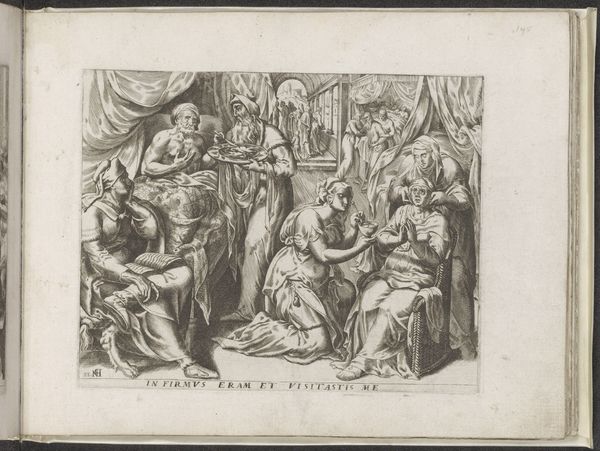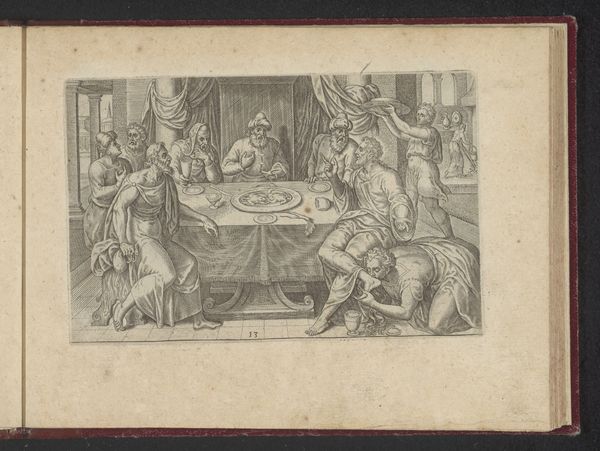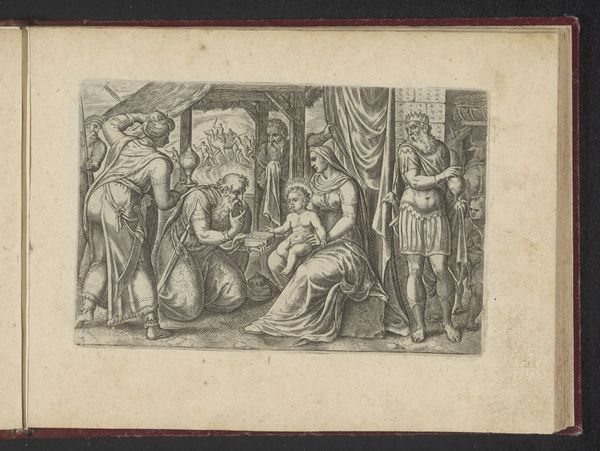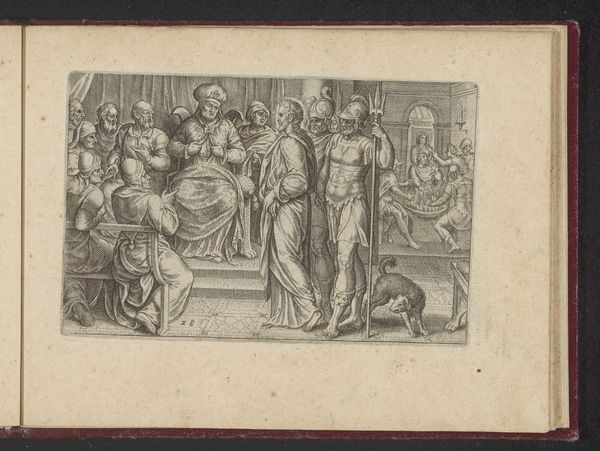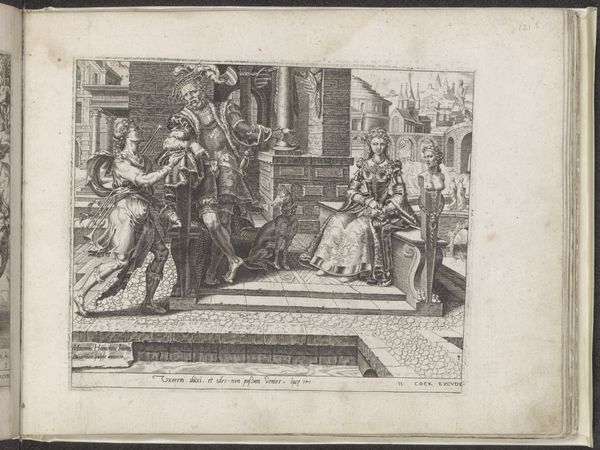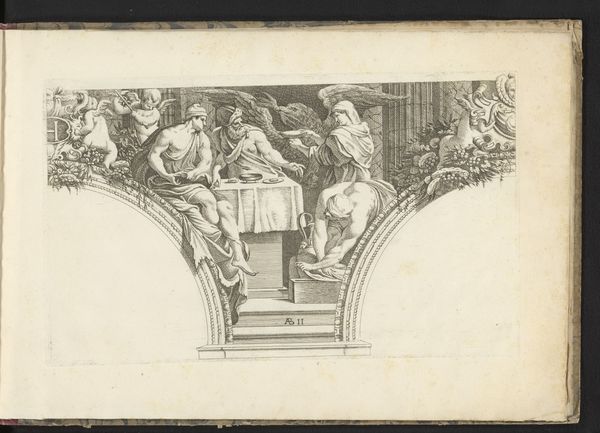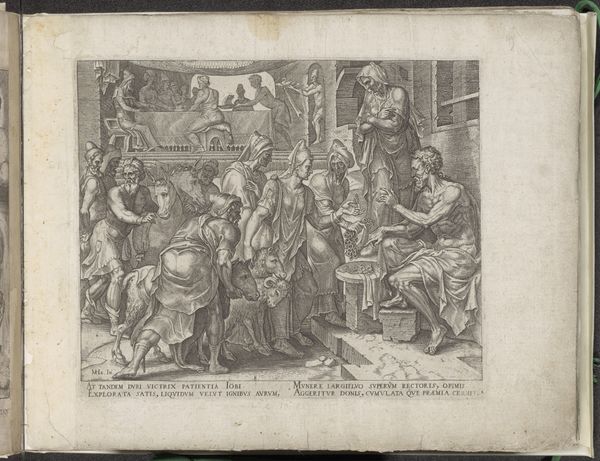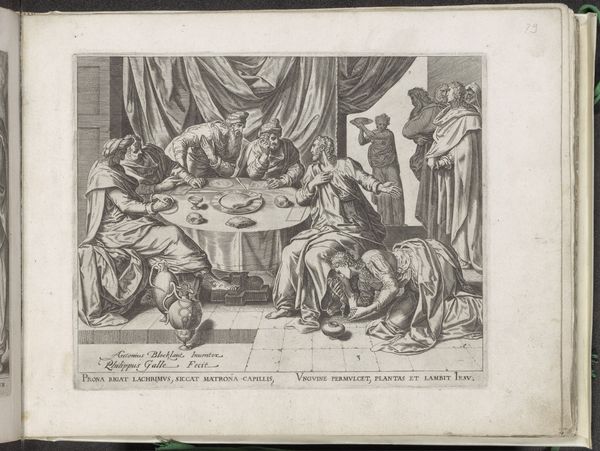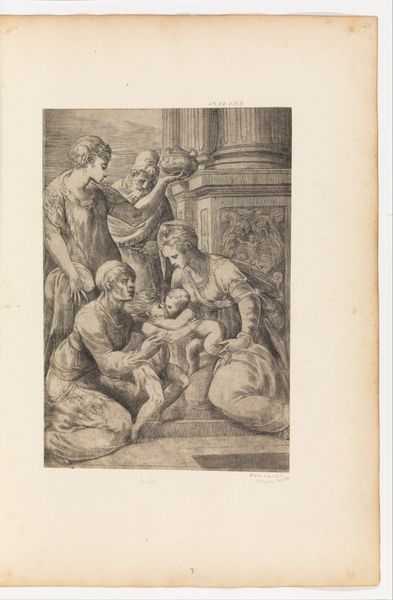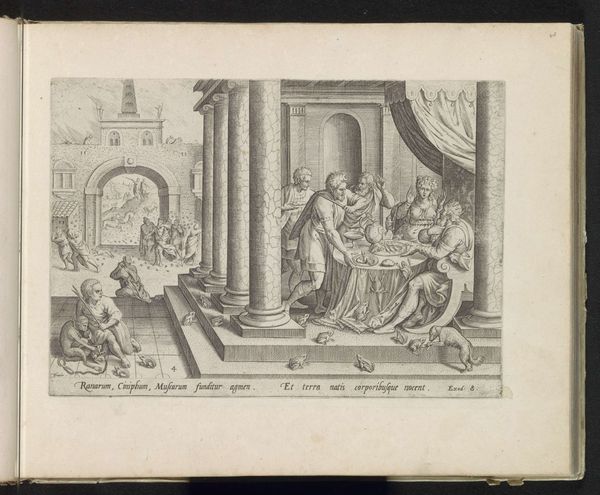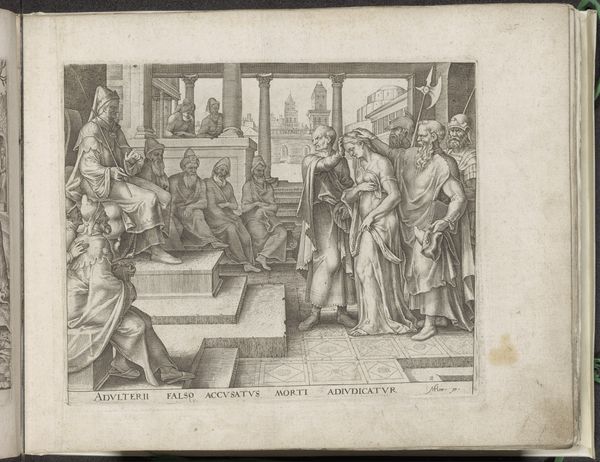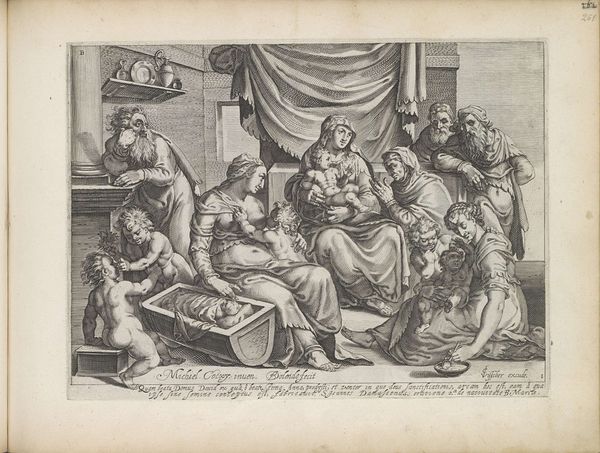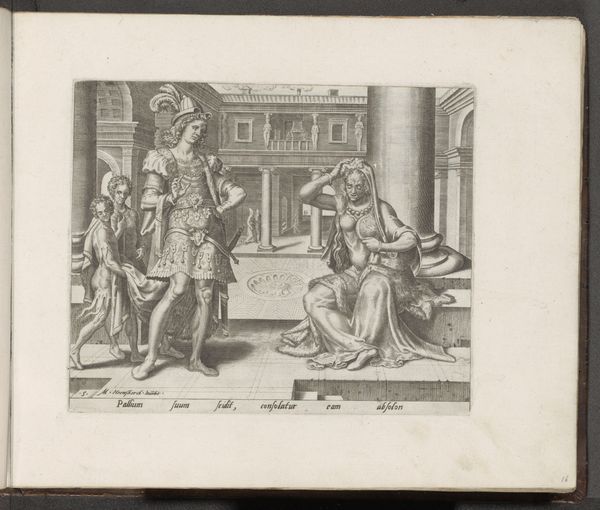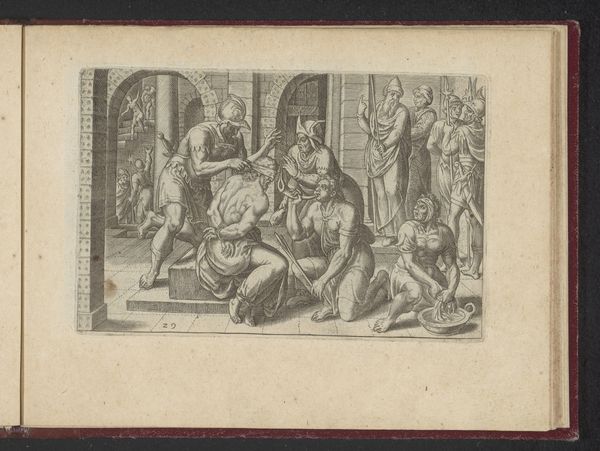
print, engraving
#
narrative-art
# print
#
figuration
#
genre-painting
#
northern-renaissance
#
engraving
Dimensions: height 203 mm, width 247 mm
Copyright: Rijks Museum: Open Domain
Curator: Immediately, there’s something…almost sterile in the atmosphere. A kind of staged domesticity. Editor: We’re looking at “The Virtuous Woman Feeding Her Family,” an engraving by Dirck Volckertsz Coornhert, dating from 1555. It’s currently held in the Rijksmuseum collection. The Northern Renaissance style feels so formal, even when portraying a supposedly candid scene of familial care. Curator: Indeed. That's precisely it. What should be a moment of warmth is rendered with such detachment. Look at how evenly lit everything is, how each figure is meticulously outlined. Is that intended to show harmony or constraint, or perhaps both at once? The architectural setting seems to imprison this interior. Editor: Well, genre scenes were a convenient vehicle for promoting moral virtues at the time. Domestic scenes, particularly those emphasizing a woman's role in maintaining the household, were a common visual lesson. Consider this through the lens of the burgeoning middle class—images such as these helped to propagate the idea of women ensuring not only sustenance but moral upbringing within a family unit. It almost serves as propaganda. Curator: And the symbolism of feeding? Nourishment not only of the body, but of the soul. This could almost be an allegory for the church. A fascinating duality, portraying domestic virtue and subtle indoctrination under one image. Also, note how every element is poised within such a rigid space; nothing is incidental. Editor: To the contemporary eye, this moral message may come across as stifling. Curator: Yet, that is its lasting impact; this feeling. In fact, Coornhert worked during a period of political and religious upheaval, in that regard, there may have been a desperate cultural effort to establish traditional and domestic values. Editor: Absolutely. The image offers a window into the complex dynamics of the time period, where public and private values intertwined. Curator: Indeed, understanding such socio-historical context transforms the imagery. It is an eerie work of domestic tension—its symbols transcend simple moralizing.
Comments
No comments
Be the first to comment and join the conversation on the ultimate creative platform.
